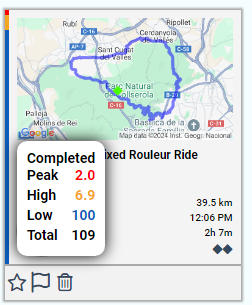I’ve been using Xert for a while now, and I find it to be a really useful tool for my cycling training. However, I often feel like I’m not fully leveraging its potential, especially when it comes to tracking my progress and making data-driven decisions. I love how Xert offers a unique approach to cycling performance, but I believe there’s always room for improvement and collaboration among users.
One specific issue I keep running into is understanding the best ways to interpret the metrics and data available to me. I want to ensure that I’m using the platform to its fullest extent, but sometimes I feel lost in all the numbers. For example, when I look at my power data, I want to know how to use that information to set realistic goals and adjust my training plan accordingly. I’ve tried reading various articles and forum posts, but I still feel like I could use some more concrete examples or tips from other users.
I’m particularly interested in how others track their cycling sessions and what metrics they prioritize. For instance, do you focus more on power output, heart rate, or some other indicators? How do you make sense of these metrics to create a tailored training plan that pushes you while ensuring you don’t overdo it? I’ve found that Xert’s cycling tracker can give me a detailed view of my rides, but sometimes it feels overwhelming.
Recently, I was inspired by the idea of incorporating more structured intervals into my training sessions. I read about how some cyclists use their cycling trackers, which serve as an interactive biking performance monitor, to identify their sweet spots and tailor their efforts accordingly. This concept resonated with me because I know that finding that balance can really help with performance gains. I think using Xert’s features to focus on my interval training could be a game changer for me.
I’ve also been exploring how to share insights and training experiences with other Xert users. It seems like there’s a wealth of knowledge out there, and I’d love to tap into that. Perhaps we could start a discussion around the different strategies people are using and what works best for them. I’m curious to know if anyone has specific examples of how they’ve successfully used Xert to improve their cycling performance.
In summary, I’m hoping to gather some advice on effectively using Xert’s cycling tracker for progress monitoring. If anyone has tips or personal experiences to share, I’d greatly appreciate it! Let’s get the conversation going and help each other get the most out of this fantastic tool.
